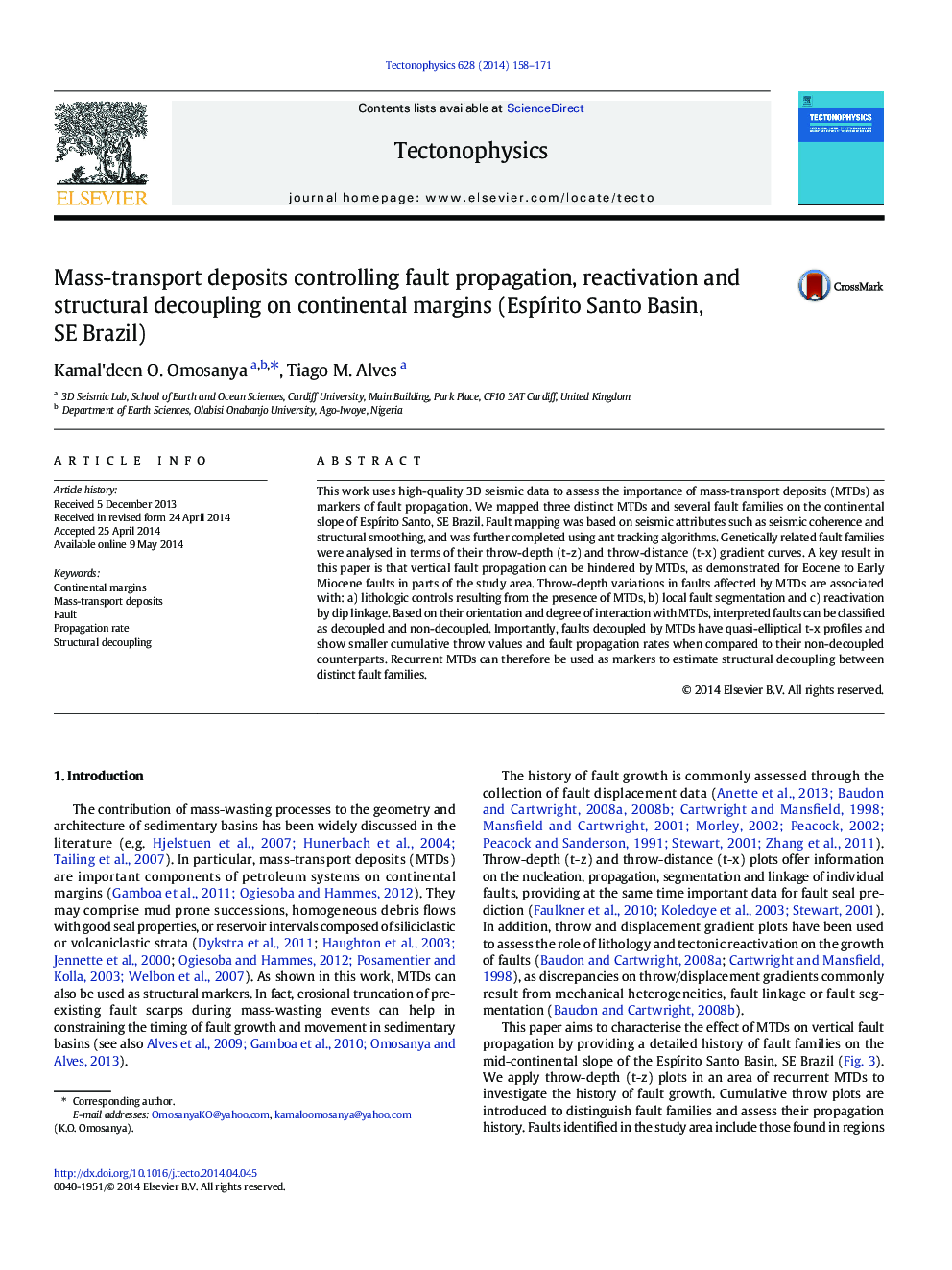| کد مقاله | کد نشریه | سال انتشار | مقاله انگلیسی | نسخه تمام متن |
|---|---|---|---|---|
| 4691936 | 1636763 | 2014 | 14 صفحه PDF | دانلود رایگان |

• Faults in SE Brazil include decoupled and non-decoupled faults.
• Faults decoupled by MTDs have quasi-elliptical t-x profiles.
• Non-decoupled faults show higher cumulative throw values.
• Highest propagation rates were recorded during early growth stage of the faults.
• Number of decoupled faults is proportional to volume of remobilized sediments.
This work uses high-quality 3D seismic data to assess the importance of mass-transport deposits (MTDs) as markers of fault propagation. We mapped three distinct MTDs and several fault families on the continental slope of Espírito Santo, SE Brazil. Fault mapping was based on seismic attributes such as seismic coherence and structural smoothing, and was further completed using ant tracking algorithms. Genetically related fault families were analysed in terms of their throw-depth (t-z) and throw-distance (t-x) gradient curves. A key result in this paper is that vertical fault propagation can be hindered by MTDs, as demonstrated for Eocene to Early Miocene faults in parts of the study area. Throw-depth variations in faults affected by MTDs are associated with: a) lithologic controls resulting from the presence of MTDs, b) local fault segmentation and c) reactivation by dip linkage. Based on their orientation and degree of interaction with MTDs, interpreted faults can be classified as decoupled and non-decoupled. Importantly, faults decoupled by MTDs have quasi-elliptical t-x profiles and show smaller cumulative throw values and fault propagation rates when compared to their non-decoupled counterparts. Recurrent MTDs can therefore be used as markers to estimate structural decoupling between distinct fault families.
Journal: Tectonophysics - Volume 628, 30 July 2014, Pages 158–171